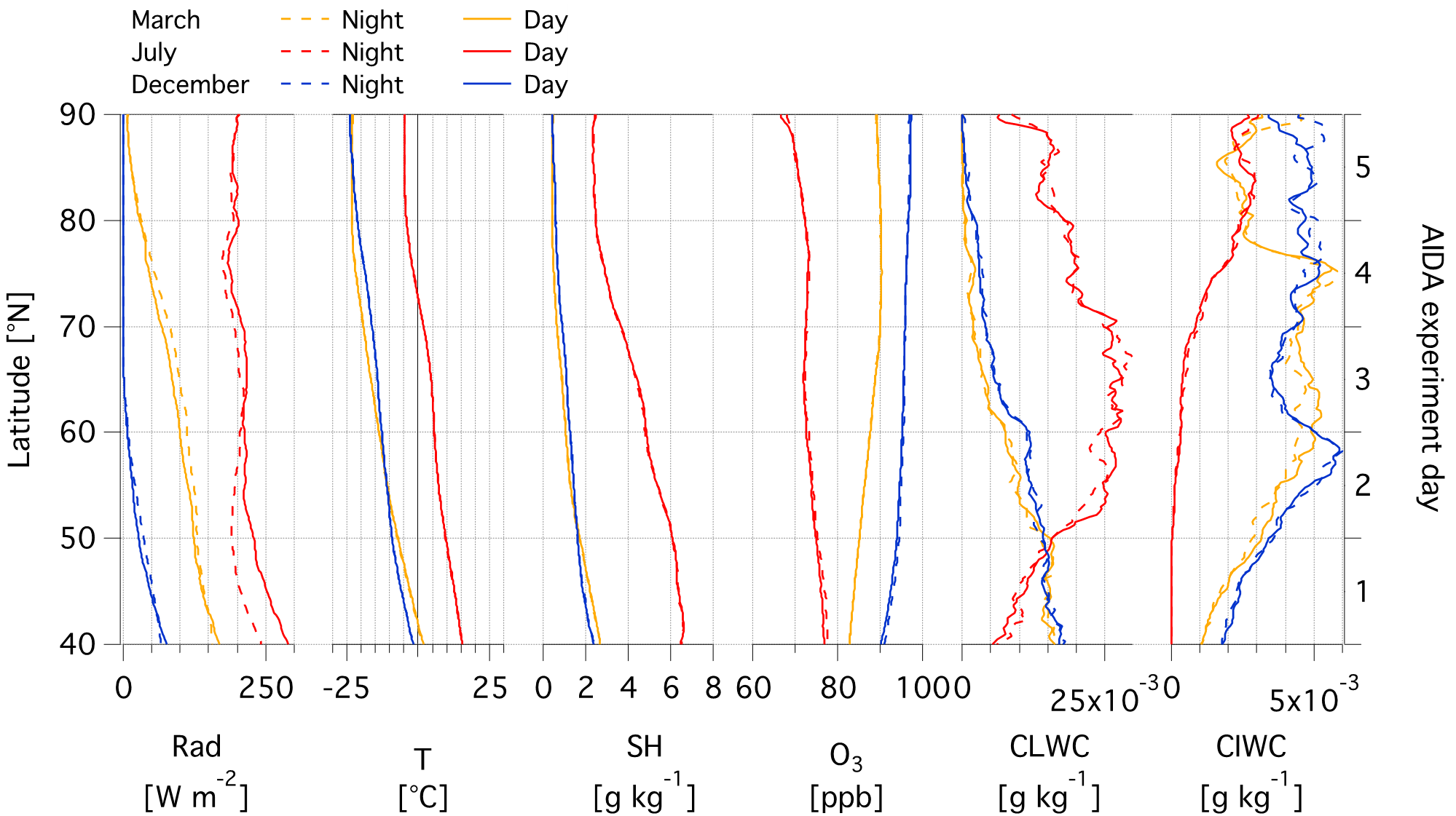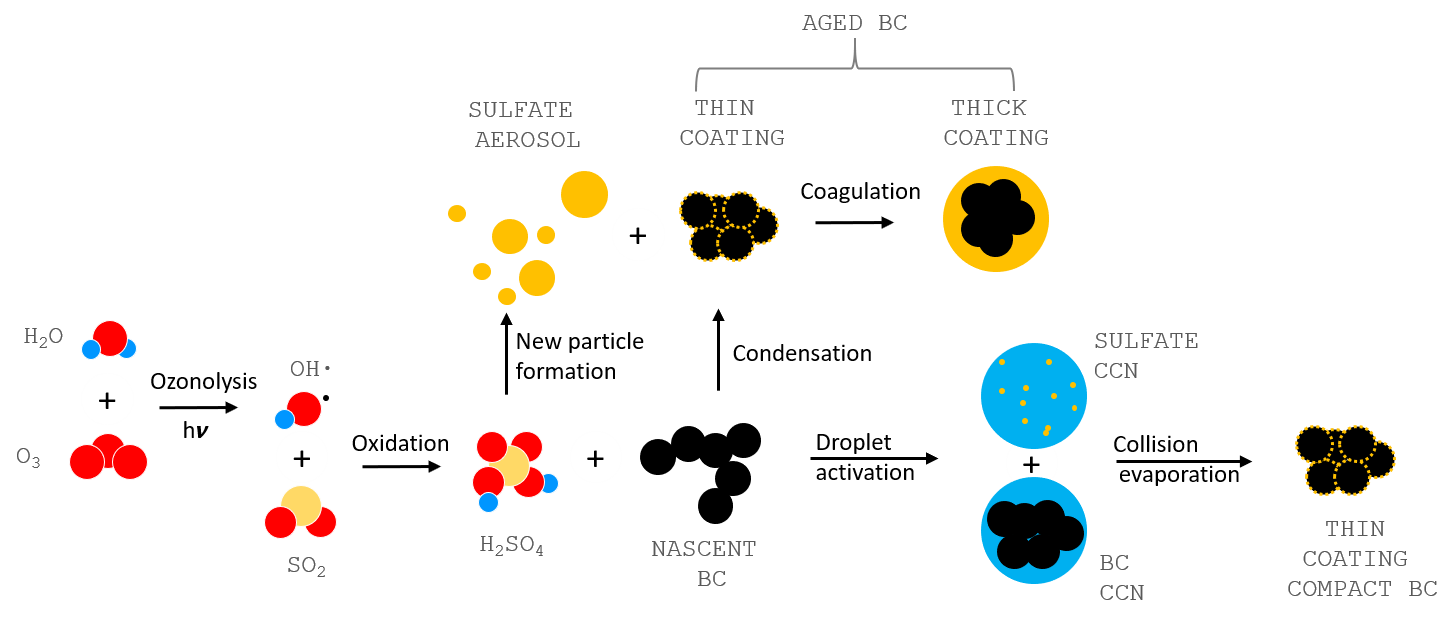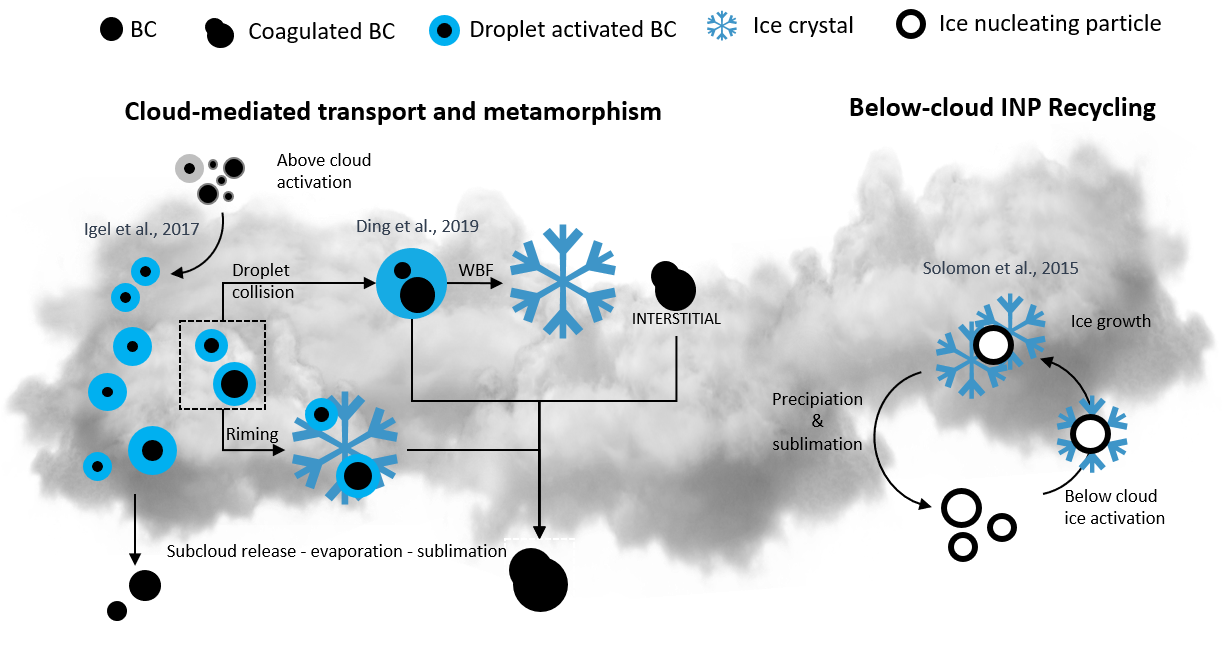AIDArct: simulating Arctic atmospheric conditions in the AIDA chamber
A strong motivation for this work is the necessity of implementing realistic ageing parametrizations in global models in order to improve the quantification of radiative forcing of black carbon (BC) in the Arctic region. This necessity arises from the scarcity of measurements of BC ageing and the non-systematic collaboration between the observational and modelling communities. We identify the following open questions in the ageing research:
- What is the temporal evolution of internal mixing of black carbon during Arctic transport, and is it seasonal dependent?
- How does the evolution of internal mixing modify the absorbing and cloud activation properties of black carbon from mid latitudes to the Arctic region?
- Does cloud processing affect climate relevant properties of black carbon such as absorption, hygroscopicity and ice activity during transport to the Arctic?
- Can global models make use of chamber measurements to improve the parametrization of black carbon ageing and cloud processing?

This project will address these questions by focusing on the following objectives:
- Reproduce the latitudinal gradient, representative of seasonal northward Arctic transport, of temperature, relative humidity, aerosol particles and gas concentration (Figure 1) using the AIDA chamber during long-term experiments.
- Measure the change of the optical and CCN-, INP- ability during long-term ageing AIDA chamber experiments caused by mixing and cloud processing (Figure 2).
- Investigation of the role and modifications of BC in Arctic mixed-phase cloud conditions (Figure 3) using the new AIDAdynamics.
- Implement the ageing parametrization in the global model ICON-ART and verify the performances against in-situ Arctic observations performed within the German Arctic Amplification: Climate Relevant Atmospheric and Surface Processes, and Feedback Mechanisms ((AC)3) project.
Figure 1: Example of ERA 5 monthly averaged reanalysis by hour of day (00:00 night and 12:00 day) at 800 hPa pressure level for March, July and December 2016. Latitude resolution of 0.25°, longitude range 0-360°. Rad: downward shortwave radiation (at the surface); T: temperature; SH: specific humidity; O3: ozone mixing ratio; CLWC: specific liquid cloud water content; CIWC: specific ice cloud water content.


Figure 2: Atmospheric mechanisms to form sulfuric acid vapors (Izumi et al., 1986) and black carbon coatings (Matsui, 2016). Potential impact of cloud processing on mixing state (Roth et al., 2016) and morphology of BC (Bhandari et al., 2019).
Figure 3: Potential mechanisms of cloud processing modifying the distribution and properties of black carbon particles: cloud mediated transport in the Arctic (Igel et al., 2017); cloud-induced BC metamorphism in mixed phase clouds (Ding et al., 2019); below cloud recycling of ice nucleating particles in Arctic stratocumulus (Solomon et al., 2015).
Contact and further Information
AIDArct is funded by the Deutsche Forschungsgemeinschaft (DFG) - Projektnummer 457895178.
